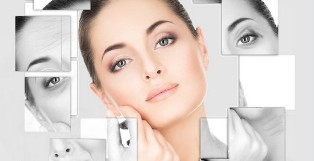A few years ago rejuvenation laser was an unattainable dream, which felt like a magic procedure. Today look younger than their years, can all. Plans to implement such a procedure, it is necessary to study the properties of the laser method of rejuvenation, which will help you make the right decision.

Before you go an expert, you should know that there are two types of laser resurfacing, in particular:
- non-ablative laser treatment;
- ablative laser treatment.
Each of them has:
- full (perfect);
- an incomplete (fractional).
Both methods share one common feature – if the laser procedure is done correctly, the skin becomes fresh and "take several years".
During this procedure, the skin is warmed up by the laser beam, and the laser affects the deeper layers of the skin, and the cells that produce fibers (fibroblasts). The Laser makes the cells to perform the micro-circulation in certain skin layers more actively. You can use this method, when the presence of post-acne, scars, ptosis, sagging of the skin.
Rejuvenation erbium laser is used, which, when exposed to the skin is not "touching" the top layer of the skin, because the wavelength is 1550 nm. After the procedure, the skin, which was implemented to affect, becomes shiny, smooth. If the skin is wrinkled, the face is uneven color, pigmentation, stretch marks, acne, etc., then this method will help to quickly remedy the situation. Method of exposure based on the exposure to the laser beam, which since the long waves do not affect the upper layers of the skin and stimulates cells in the dermis.
The main difference between ablative method described above is that the laser exposure is performed in all layers of the skin, including the upper, and the procedure uses a carbon dioxide laser (CO2). This method is recommended and is most often used to remove small facial wrinkles, wrinkles that form around the eyes, to get rid of pigmentation, improves skin tone. The procedure involves a powerful effect on the dermis, which favors the smoothes skin texture and has a strong lifting effect. The wavelength of the laser used in this method is 10600 nm.
The principle of ablative methods is the impact on the water all skin layers with a laser beam.
After the procedure, the rehabilitation period is higher than, if you carry out non-ablative rejuvenation, which is associated with the effects of deeper layers of the skin. In both cases, the laser affects the water molecules that are located in the skin, and the liquid "evaporates" from the dermis habit by evaporation, after which the collagen and elastin needed for skin rejuvenation.
The intensity of exposure to each of the methods depends on the current skin condition and desired result. In addition to selecting the appropriate method of laser resurfacing can be a doctor, which in this direction is the appropriate qualifications and extensive experience.
Differences between the continuous laser treatment and the fractional effect
In order to obtain complete rejuvenation, it is necessary to use a laser beam, which affects the skin of the "fixed place". The method involves the continuous grinding of the skin, and so, gradually the damaged cells are replaced with new ones. The fractional effect gradually replaced the leather, fixed (full) method, which is understandable. We talk about the fact that after laser treatment the skin is restored for a long time in addition, the formation of scars on the surface of the skin.
A fractional exposure based on the principle of skin exposure to the area, which is the beam falls on the skin is not a "fixed place", resulting in the formation of a small grid. This means that the effect of a small patch of skin and not over the entire surface. In particular, the ray can cover the area about 20% the size of the face, but the rejuvenation will affect all faces, although the area between the split radiation.
Photorejuvenation laser
Photorejuvenation is an enhanced form of such effects, which do not affect the upper layers of the epidermis. Thus, this technology has a lot of differences to the usual method. Photorejuvenation treats age spots, vascular diseases, repair the appearance of photodamage. This exposure to the rays is used, the length of which depends on the type of device used for the procedure, especially.
So, when the radiation is "forgetting" to water, i.e. the beam does not interact with the fluid, but absorbs the hemoglobin and melanin, which makes the photorejuvenation procedure as efficient as possible, especially when problems in the blood vessels and pigment. Photorejuvenation provoked to start the production of collagen, which tightens the skin, smoothes wrinkles, improves skin color and improves its tone.
After the procedure, the rehabilitation period is not needed, and the procedure is performed without anesthesia. Unscrupulous "experts" do not tell customers methods of laser resurfacing, which "force" to use available at the moment. The result of such a process may be not getting the expected or even a negative result, this means that deciding to rejuvenate, you should only go to experienced doctors with high qualifications.





















